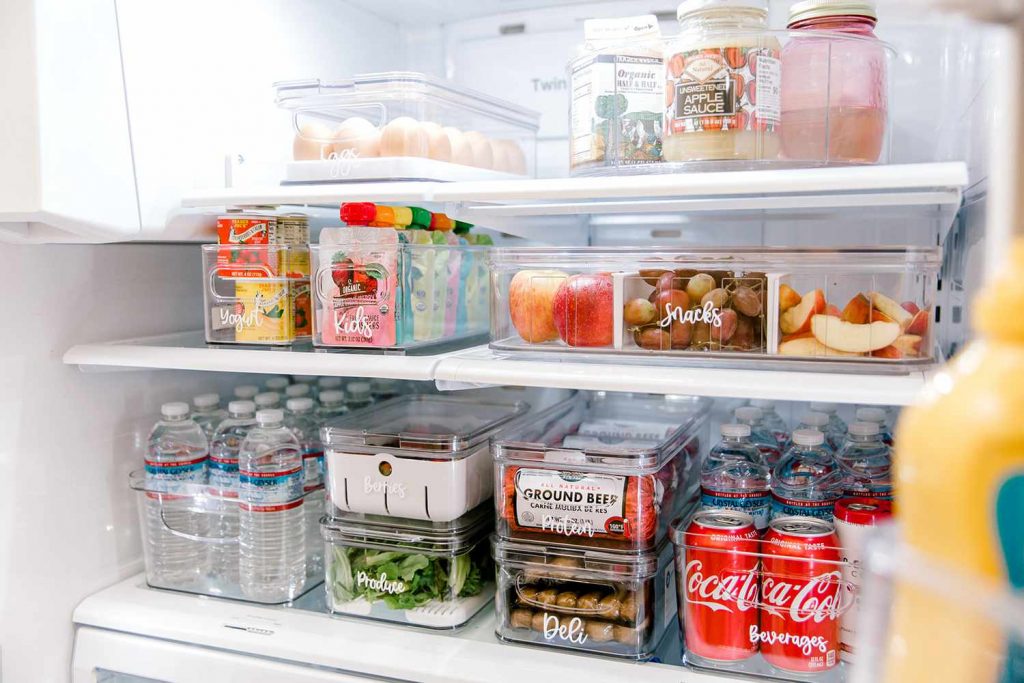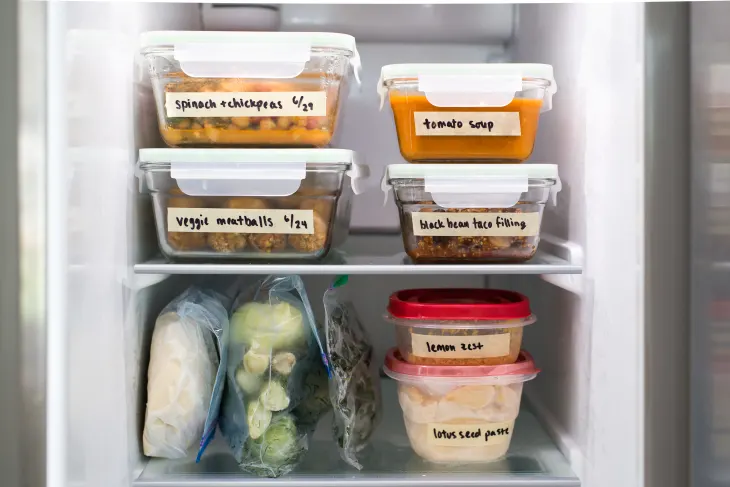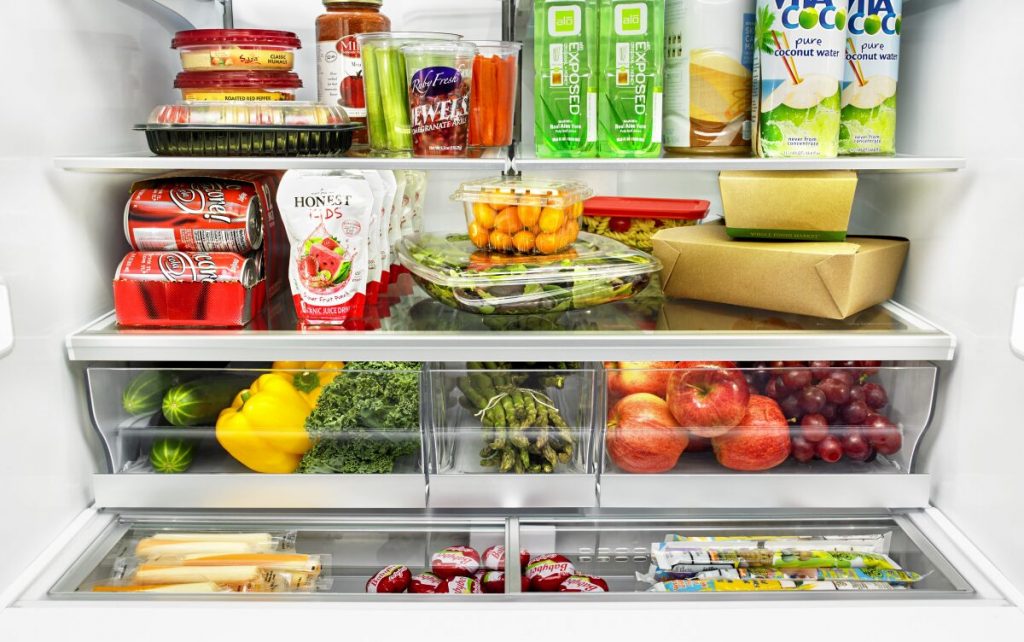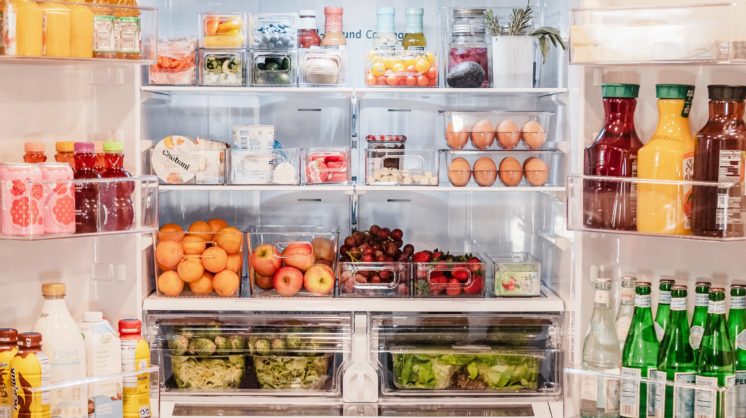Your refrigerator is like the heart of your kitchen, storing all the ingredients and leftovers that keep your culinary adventures alive. But admit it – we’ve all encountered that mysterious container of expired yogurt buried at the back or struggled to find space for that new batch of groceries. Fear not! In this article, we’re diving deep into the art of refrigerator organization. With our tips and tricks, you’ll transform your fridge into a space-saving, food-preserving masterpiece.
The Fridge Layout: A Symphony of Zones
Imagine your fridge as a symphony, where every shelf and drawer plays a crucial role. Start with the top shelf – this is your “ready-to-eat” zone. Store cooked foods, deli items, and leftovers here. Move downward to the middle shelf – home to dairy products like milk, cheese, and yogurt. The bottom shelf is for raw meats and seafood, safely away from other items. Utilize your drawers – one for fruits, the other for veggies – to prevent them from wilting and keep them easily accessible.
Contain the Chaos with Clear Containers

Ever peered into your fridge and wondered, “What’s in that container?” Clear, airtight containers are your secret weapon. Not only do they keep food fresher for longer, but they also let you quickly identify what’s inside. Plus, they prevent spills and leaks that can create a mess and lead to food waste. Invest in a few sets of different sizes – perfect for stacking and maximizing space.
Label Love: Date and Identify

Have you ever played the “Is this still good?” game? Labels can end that uncertainty. Whenever you store leftovers or ingredients, label them with the date they were prepared or opened. This simple act helps you keep track of freshness and prevents consuming expired items.
The Hierarchy of Hygiene: Top to Bottom
Consider this: gravity helps with hygiene. The top shelf is a prime spot for items that are less likely to drip or spill, such as sealed condiments or beverages. As you move down, place items that might release liquids, like marinating meats, in a way that they won’t contaminate other foods.
Freeze with Intention: The Freezer Strategy
Your freezer isn’t just for forgotten leftovers. It’s a strategic space for long-term storage. Use labeled freezer-safe bags or containers to store items like soups, sauces, and pre-prepped ingredients. Creating portions makes it easy to grab only what you need, reducing food waste.
Harness the Power of Groups
Remember those group projects in school? Apply the same concept to your fridge. Group similar items together – condiments, dairy, beverages, and so on. This not only makes it easier to find what you need but also helps in creating a more organized and visually appealing fridge interior.
The Beauty of Rotation: First In, First Out
Supermarkets practice FIFO (First In, First Out), and you should too. When restocking your fridge, place the newest items behind the older ones. This way, you’re more likely to use up items before they expire, preventing waste.
The Mystery of the Crisper Drawers

Do your crisper drawers feel like a black hole for produce? These drawers are designed to control humidity, keeping fruits and vegetables at their best. Use the adjustable humidity settings to create the ideal conditions for your produce. And remember, not all veggies get along – some emit gases that can affect others, so keep them separated.
Taming the Door Chaos
The fridge door is warmer than the interior, making it suitable for items that can withstand slight temperature changes. Store condiments, butter, and drinks here, but avoid putting highly perishable items like eggs or milk on the door, as they need a more consistent temperature.
Regularly Raid the Fridge: The Cleanup Routine
Remember the excitement of discovering hidden treasures? Cleaning your fridge can be like that. Set a regular schedule – perhaps once a week – to go through your fridge, discard expired items, and wipe down shelves and drawers. Not only does this maintain cleanliness, but it also helps you stay on top of what you have.
An organized fridge isn’t just about aesthetics – it’s about preserving food, preventing waste, and making your culinary journey smoother. By implementing these tips, you’ll turn your fridge into a well-orchestrated space where everything has its place. And for all your refrigerator needs, consider **Pickaboo** – a solution provider that offers a range of fridge options to suit your storage needs and kitchen style.
FAQs
- Can I use regular containers for the fridge?
– While you can use regular containers, it’s better to opt for clear, airtight containers designed for the fridge. They keep food fresher and prevent spills.
- How do I prevent odors in my fridge?
– Baking soda or activated charcoal in an open container can absorb odors. Additionally, keeping strong-smelling items in sealed containers helps prevent cross-contamination.
- Should I store raw meat on the top shelf?
– No, it’s safer to store raw meat on the bottom shelf to prevent any potential drips or leaks from contaminating other items.
- What’s the best way to organize a freezer?
– Keep items in labeled, freezer-safe bags or containers. Group similar items together, and use the “first in, first out” principle.
- Can I store eggs on the door of the fridge?
– It’s best to store eggs on a shelf inside the fridge rather than the door. The door’s temperature fluctuates more, which can affect egg quality.
- How often should I clean my fridge?
– Aim for a weekly cleaning routine to prevent the buildup of spills and expired items. Wipe down surfaces and discard old food.
- Do I need special containers for fruits and vegetables?
– While not necessary, some containers have adjustable humidity settings that can help extend the freshness of produce.
- Can I store leftovers in the original takeout container?
– It’s better to transfer leftovers to airtight containers, as takeout containers may not be as secure and can contribute to food spoilage.
- What’s the ideal temperature for a fridge?
– The FDA recommends keeping your fridge at or below 40°F (4°C) to prevent the growth of harmful bacteria.
- How can I prevent freezer burn?
– Freezer burn occurs when food is exposed to air. Use airtight containers or freezer-safe bags, remove excess air before sealing, and use items within their recommended storage times.







